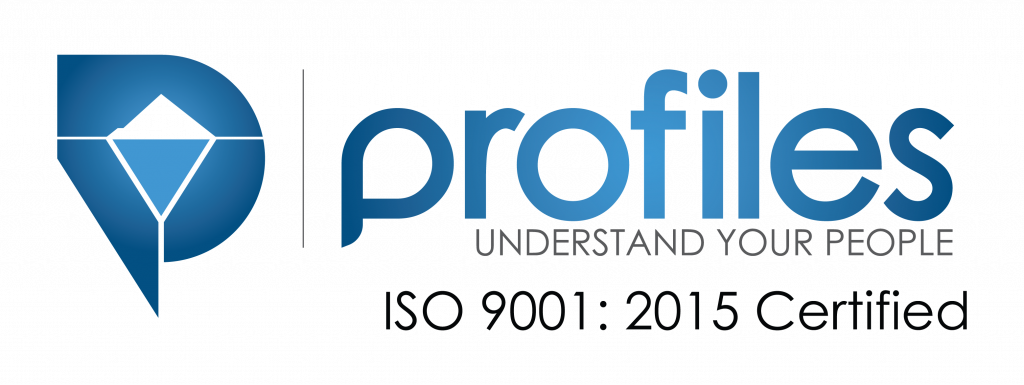A burning question has been a topic of debate for years: Does a task-oriented vs. people-oriented management style work best?
A leader keen on hitting goals and fulfilling responsibilities thrives on structure and discipline. On the other hand, one that emphasizes engagement and relationships safeguards workforce well-being.
The matter boils down to a tug-of-war between employees desiring empathy and organizations wanting efficiency. But, to paint a clearer picture, we’ll answer these questions: Can leaders be both task-oriented and people-oriented? And, more importantly, should they be?
Task-oriented vs. people-oriented: The two styles in practice
Let’s start by distinguishing between the two management approaches.
Task-oriented leadership
To ensure accountability, task-oriented leaders lean on organized processes, measurable outcomes, and efficient execution. They exhibit behaviors such as:
- Setting SMART (Specific, Measurable, Achievable, Relevant, Time-bound) goals
- Breaking down complex projects into actionable steps
- Tracking progress through dashboards and key performance indicators (KPIs)
- Enforcing policies and quality standards
Think of how managers in manufacturing design stringent workflows and timetables to minimize errors and maximize output.
People-oriented leadership
In contrast, people-oriented leaders focus on trust, well-being, and collaboration. This perspective is built on the fact that engaged employees are more invested in their roles. Their conduct promotes:
- Active listening
- Employee recognition
- Coaching and mentoring
- Psychological safety
As an example, imagine a sales lead that actively teaches juniors and fosters camaraderie to boost team morale and cohesion.
Strengths and limitations of each style
Before moving on, do note that neither leadership approach is better than the other—both are critical to success. But, like every management style, they have upsides and downsides.
Task-oriented leadership
Strengths
According to the Project Management Institute (PMI), organizations waste an average of 11.4% of their investments due to poor project performance. A task-focused approach mitigates this risk.
- Efficiency: Structured workflows, as well as stringent execution and monitoring are critical to this style, as these ensure timely and cost-effective project completion.
- Clarity: A Gallup study indicates only 46% of employees know what’s expected of them at work. Structure prevents ambiguity and allows them to fulfill clear responsibilities.
-
- Consistency: Industries like healthcare, aviation, and manufacturing adhere to strict standards since mistakes are costly and dangerous. Task-oriented styles ensure compliance.
- Achieving objectives: SMART goals are foundational to a task-driven approach. These align teams with targets.
Limitations
A results-heavy outlook can backfire, as it leaves employees feeling like cogs in a machine. With engagement being at its lowest in a decade (31% by 2024), you must also consider the disadvantages.
- Rigidity: McKinsey cites agility as a strong performance driver, but excessive structure stifles creativity and adaptability.
- Less autonomy: At times, task-focused leaders lean on micromanagement, which undermines employee trust and independence.
- Disengagement: Overemphasizing numbers and checklists makes employees feel undervalued.
- Lack of empathy: Styles that hinge on results may overlook employee well-being.
People-oriented leadership
Strengths
On the other hand, prioritizing workforce well-being and expectations enhances engagement—an aspect that Gallup states is tied to positive business outcomes:
- Trust and loyalty: People-oriented approaches forge strong relationships. This results in 18% less turnover for high-turnover organizations and 43% less turnover for low-turnover organizations.
- Better performance: Engaged employees are willing to go the extra mile, demonstrating 18% higher productivity and 23% higher profitability.
- Psychological safety: Relationship-driven managers empathize and encourage. They let innovation thrive and personnel freely share their thoughts without fear of retaliation.
- Collaboration: People-focused approaches nurture chemistry, cohesion, and inclusive cultures—aspects that build successful teams.
Limitations
Overrelying on this approach, however, leaves you vulnerable to these pitfalls:
- Indecision: Catering to too many stakeholders, for example, can delay critical decisions and projects that require immediate action.
- Over-accommodation: Constantly meeting individual needs may dilute accountability, as a people-pleasing approach may apply policies inconsistently.
- Macromanagement: Autonomy empowers teams, but insufficient oversight can result in a lack of direction and confusion regarding roles and responsibilities.
- Underperformance: Leniency regarding metrics or deadlines increases the risk of productivity dips.
Debunking the Myth: “You Can’t Be Both”
Traditional leadership models oversimplify management styles, generating the belief that leaders must choose between task-oriented or people-oriented outlooks.
For example, Blake and Mouton’s Managerial Grid placed leaders on a spectrum built on two axes: Concern for people and concern for production. Past corporate cultures also rewarded numbers-first approaches, undervaluing soft skills like empathy and communication.
True leadership is contextual
Today’s world is dynamic. Industries, technologies, and business practices regularly shift. As such, real leadership isn’t static; it evolves. Think of how organizations must now cater to modern workforce expectations around:
- Flexibility and work-life balance
- Diversity, equity, and inclusion (DEI)
- Mental health and well-being
McKinsey even touches on how adaptability is critical to company success, as it enables learning and opportunity-driven viewpoints during times of systemic change.
Leaders who balance both
Simply put, today’s managers must balance people and results, as exemplified by these examples:
- Satya Nadella (Microsoft CEO): He saved Microsoft from stagnation and uncertainty by pursuing innovation (task focus) and steering the culture toward empathy and collaboration (people focus).
- Indra Nooyi (Former PepsiCo CEO): She drove PepsiCo’s growth by targeting portfolio diversification and environmental sustainability (task focus), then uplifting the representation of women and people of color in leadership positions (people focus).
The dangers of going too far
A task-oriented or people-oriented has distinct advantages, but heavily leaning on either one has pitfalls.
Over-indexing on tasks
47% of employees say most or all of their stress comes from work, which can be exacerbated by an extreme desire for results. This leads to grave workforce issues like:
- Burnout: Excessive workloads and pressure to hit targets result in a lack of work-life balance or burnout in worse cases.
- Turnover: Managers that don’t support well-being damage employee retention, especially when work grievances are left unresolved.
- Low morale: Suffocating leadership styles erode motivation and productivity, as workers will feel you don’t trust their ability to perform.
- Workplace conflict: When tasks trump connection, relationships become transactional. This can breed friction and misunderstandings.
Over-indexing on people
Teams that overplay harmony sacrifice execution and company standards. This leaves your organization vulnerable to the following:
-
- Blurred accountability: Leaders who avoid difficult workplace conversations, for instance, fail to enforce expectations and enable underperforming employees.
- Missed goals: Team effectiveness is ultimately reduced when results are deemed as less important. This impacts project timelines and objectives.
- Resentment: When employees’ needs overshadow organizational goals, leniency becomes the norm. Higher-performing employees may feel undervalued, while the others may become entitled.
- Job dissatisfaction: When productivity isn’t a priority, actual performers disengage because their efforts aren’t recognized.
Leaning toward extremes: Uber
Uber is a prime example of how these risks manifest. Travis Kalanick, the company’s co-founder and former CEO, aimed for aggressive growth but neglected culture.
Reports of workplace toxicity led to scandals, lawsuits, and his resignation in 2017, showing how an imbalance can destabilize even a renowned name in technology.
Adaptive leadership: The skill of flexing
While the debate assumes a choice between a task-oriented or people-oriented style, adaptive leadership presents a better option, as it involves your ability to adjust your approach. It’s done according to context, and these scenarios demonstrate how it works:
- Crisis: System outages, safety incidents, or market disruptions require more clarity and decisiveness than consensus. While urgent problems should be immediately resolved, employees will still require support and stability when their livelihoods are affected.
- Growth: During expansion, scalable processes are injected to correct operational inefficiencies, but transforming how things are done creates stress. This requires change management—think of employee upskilling and reskilling or work-life balance initiatives.
- Performance management: Periodic goal tracking and performance reviews involve mixing both approaches: holding personnel accountable (task focus) while recognizing strengths and improvement areas (people focus).
A misconception about adaptive leadership we’d like to clarify is that it’s innate. Contrary to this belief, it’s actually a skill that can be honed. The upcoming sections will tackle how you can develop it.
Know yourself better with behavioral assessments
Under pressure, managers typically default to their natural tendencies. Some gravitate toward structure and efficiency, while others lean on empathy and relationships. Profiles Asia Pacific’s behavioral assessments, however, can reveal such inclinations:
DISC
This evaluates one’s personality based on four dimensions:
- Task-oriented individuals often score higher in Dominance (D) and Conscientiousness (C), indicating a preference for results and precision.
- Those who are people-oriented, meanwhile, score higher in Influence (I) and Steadiness (S), leaning more towards patience and collaboration.
Myers-Briggs Type Indicator (MBTI)
MBTI categorizes people according to personality preferences, from how you make decisions (Thinking or Feeling) to how you organize your time and environment (Judging or Perceiving).
Task-heavy leaders, for instance, would fall under Thinking or Judging, while people-focused ones lean toward Feeling or Perceiving.
CheckPoint 360° Feedback
This tool collects feedback from peers, employees, and supervisors to provide a complete view of your leadership behavior. It highlights discrepancies between how you see yourself and how others perceive you.
What these assessments uncover
Our behavioral tools go beyond personality, they reveal how you make decisions and behave under stress, as well as gaps that limit your effectiveness. These insights include:
- Habits: Do you default to structure (task) or relationships (people)?
- Blind spots: Do you neglect empathy while pursuing goals or avoid conflict to maintain harmony?
- Communication style: Do you direct or collaborate?
- Decision-making: Do you rely on data and structure or intuition and consensus?
How managers can maximize these insights
Leaders, meanwhile, can use this data to:
- Compare your perception with others’: This shows mismatches between intent and impact.
- Improve weaknesses: Are empathy and coaching problem areas? Do you not enforce accountability structures enough?
- Periodic evaluations: As we mentioned earlier, leadership isn’t static. Regular assessments help track individual growth.
Practical tips for balancing both styles
Understanding the concept of task-oriented vs. people-oriented leadership and having data is one thing, but application is another. Here are some strategies that can help you balance both approaches.
For task-leaning leaders
- Build emotional intelligence (EI): Self-awareness and empathy, core EI skills, let you recognize when you place too much pressure on people. They also enable active listening, a capability that allows you to build understanding with employees.
- Ask open-ended questions: Clear direction prevents confusion. But, instead of just dictating, also solicit team input. This encourages collaboration and empowers employees to take ownership of work.
- Conduct one-on-one check-ins: Besides being opportunities for open communication, these also allow you to build more personal connections.
- Give credit when it’s due: By recognizing employee contributions, you make them feel valued and respected.
For people-leaning leaders
- Set firm expectations: Maintaining team cohesion and harmony is important, but clarity ensures everyone fulfills their responsibilities.
- Be fine with tough decisions: As a leader, you can’t please everyone. Think of difficult workplace scenarios that require decisive calls. These may require telling others “No.” rather than catering to individual needs.
- Track goals publicly: By making everyone aware of organizational objectives, and how they’re contributing to it, you ensure accountability and progress.
Final thoughts: Effective leadership considers context, then adapts
Today’s dynamic business landscapes are no longer about task-oriented vs. people-oriented leadership; they’re about learning how to adjust your approach in the moment.
Great managers are flexible—they drive results and enforce accountability or uplift engagement and well-being when necessary. Thankfully, adaptive leadership is a skill that can be molded by the right strategies. Behavioral tools, meanwhile, provide valuable insights that support them.
If you wish to explore assessments that can delve into your leadership tendencies and allow you to grow beyond your default style, get in touch! We’ll happily walk you through them.




